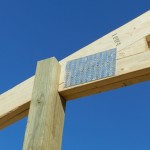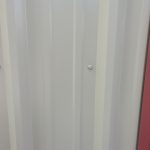Welcome to Ask the Pole Barn Guru – where you can ask questions about building topics, with answers posted on Mondays. With many questions to answer, please be patient to watch for yours to come up on a future Monday segment. If you want a quick answer, please be sure to answer with a “reply-able” email address.
Email all questions to: PoleBarnGuru@HansenPoleBuildings.com
DEAR POLE BARN GURU: After reading many articles on this blog about insulating a new pole building I have come up with this conclusion. I will run this by the Guru for your opinion. Roof thermal break-: trusses with purlin on 2ft centers, A1V on top of purlins, steel roofing applied over A1V. sidewalls. Wall girts applied to posts at 2 ft centers, Tyvec House wrap around perimeter with steel siding applied over Tyvek. Vented eave and ridge. This should give thermal break to insulate interior of pole building and prevent thermal gain. Do you believe this is the proper path for insulating the interior for climate control? This is a great blog with lots of good information, thanks!
Question from KORN FARMER in BURR OAK, MI
DEAR KORN FARMER: I sincerely appreciate all of your kind words and will try not to let them go to my head! You’ve become one of my favorite readers. I would certainly agree you are on the track for success. You might want to read these articles in regards to your climate control issues:
https://www.hansenpolebuildings.com/blog/2012/04/climate-controlled/ and https://www.hansenpolebuildings.com/blog/2012/07/raised-heel-trusses/
Mike the Pole Barn Guru
DEAR POLE BARN GURU: Can an all wood pole building be built over a full new basement? MICHELE IN EAST HAMPTON, NY
DEAR MICHELE: I happen to live on a lake, which is nestled into a mountain valley. For the most part, the parcels of land around the lake tend to be very narrow and very steep (only so much lake frontage exists, therefore the narrow lots). In my case, the lot gains well over 100 feet of elevation from lake to back, over the 250 feet of depth.
With the lake as my “front” yard, on the back of my lot is a pole building upon which the site had 12 feet of grade change in 40 feet. The solution was to excavate to the lowest point, then construct a foundation on the “high” sides. In my case, we used eight inch insulated Styrofoam blocks, poured with concrete – one wall being 12 feet tall, and the other sides appropriately steeped to match the land contours. Steel brackets engineered to withstand moment (bending) forces were poured into the top of the walls to attach the pole building columns.
The direct answer to your question is – yes. Whether a full basement, partial basement, or daylight basement (the last being closest to my particular case), pole buildings can be attached to any adequately designed foundation wall. We prefer to use wet set brackets (those embedded in the concrete wall at time of pour) as opposed to dry set brackets (those attached to the concrete wall with bolts) for a sturdier connection, but either one can be used.
Mike the Pole Barn Guru
DEAR POLE BARN GURU: My ideal metal building size would be 26 x 46. Will this size work so metal and wood will fit without waste or extra labor? If no, what size would work best? BERNIE IN GARDEN CITY
DEAR BERNIE: As lumber comes in multiples of two feet and steel in multiples of three feet – the most economical is going to end up being divisible by six. To get the best total bang for your buck, multiples of 12 feet are the most cost effective in nearly every case – utilizing double trusses aligned with the columns and 2×6 or larger roof purlins on edge.
So what does one truly save by this? Usually a few pennies per square foot.
In the end, build the largest building you can economically justify and which will fit on your property. I’ve never yet had a client tell me their new building is just too big!
Mike the Pole Barn Guru









